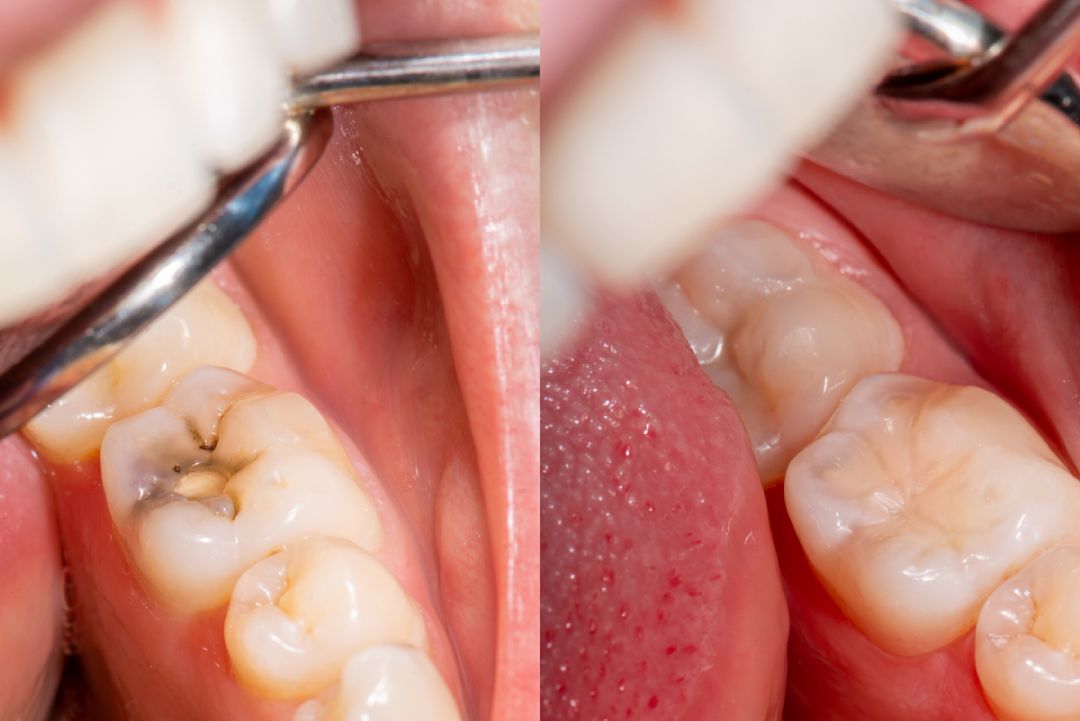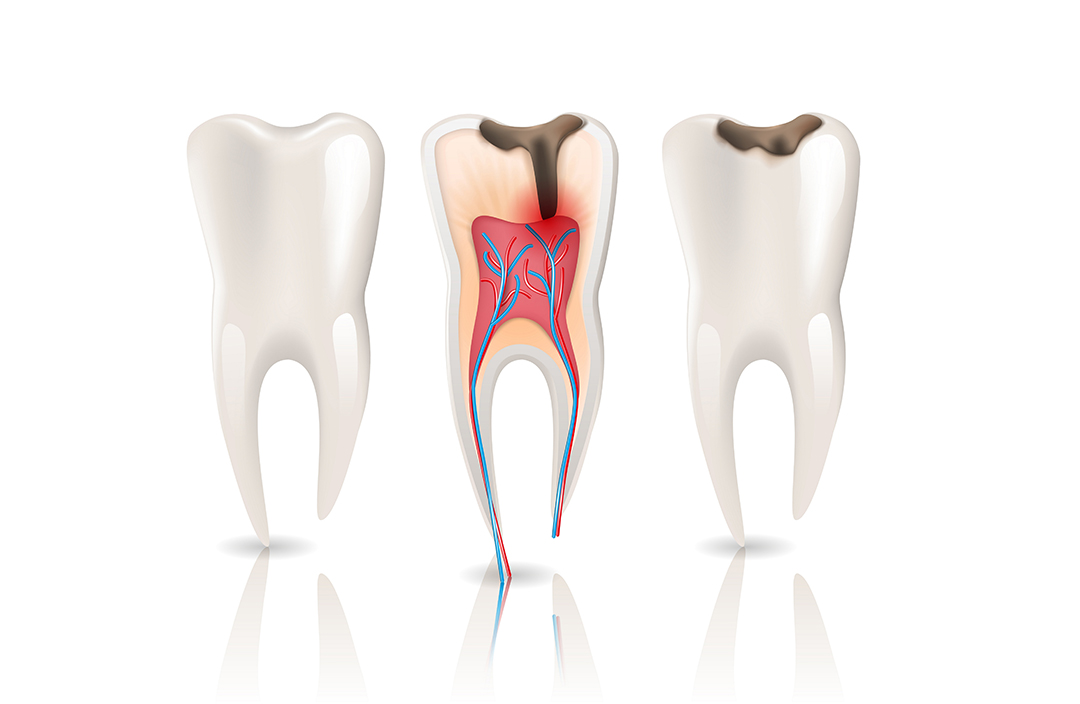Servicii
Root canal treatment
Endodontics or root canal treatment is a branch of dentistry that deals with the treatment of dental pulp and apical periodontitis.
One of the most frequently used dental procedures is the root canal treatment, which offers the possibility of saving the tooth and avoiding extraction. Root canal treatment (also referred to as endodontic treatment in the specialized language) is recommended in cases of pulp necrosis (the pulp of the tooth is dead) or when infections (periapical processes) appear at the top of the root.
We take care of our patients
Steps of the root canal treatment
Root canal treatment aims at removing the dental cavity (which causes pulpal inflammation) and stopping the evolution of the inflammatory process, as well as disinfecting the canals, so that the infection doesn’t reach the bone. For this reason you should visit a dentist as soon as you feel any discomfort related to your teeth, so that we can place the correct diagnosis and stop any infection there may be!
The root canal treatment has a few different steps, as follows:
- removing the carious tissue;
- emptying canals of content and cleaning them both mechanically, using needles, and chemically, using certain special substances;
- filling canals with a thermoplastic material;
- tooth reconstruction.
The root canal treatment is followed by placing a crown on the affected tooth.
In addition to the examination of an endodontist, we also offer the following endodontic services:
- Root canal treatment (or retreatment) of single-root canals;
- Root canal treatment (or retreatment) of double-root canals;
- Root canal treatment (or retreatment) of multiple-root canals;
- Removing fractured instruments;
- Examination with an endodontic microscope;
- Closure of perforations;
- Internal whitening.




When should you visit an endodontist?

Teeth that require root canal treatment are usually teeth with extended cavities, with infiltrated fillings (coloured around the edges), or those with trauma or carious processes under the works. It is usually attempted to keep the nerve alive as much as possible, opting for filling, if the nerve can still be saved.
How is the canal treatment performed?
Using an endodontic microscope during the root canal treatment ensures a success rate of over 90% and eliminates important risks, allowing us to view the finest details, such as inflammations, hidden or curved canals, or even instruments that have been fractured or forgotten in canals.
Steps of the root canal treatment
The root canal treatment has a few different steps, as follows:
- removing the carious tissue;
- emptying canals of content and cleaning them both mechanically, using needles, and chemically, using certain special substances;
- filling canals with a thermoplastic material;
- tooth reconstruction.
The root canal treatment is followed by placing a crown on the affected tooth.
Contact us
Call us for an appointment
Dentist Appointment
Root canal treatment
Frequent questions
Is the root canal treatment painful?
Generally, a local anesthetic is applied before initiating the root canal treatment, to ensure that you will not feel any pain or discomfort. However, you may feel a local sensitivity after the intervention, for which your physician may prescribe painkillers.
Why should I need a root canal treatment if my tooth doesn’t ache anymore?
Your tooth ache may go away, either after the administration of antibiotics or by itself. Just because it doesn’t ache anymore it doesn’t mean that there is no longer an infection there. The root canal treatment will disinfect the inside of the tooth – the source of infection – and will prevent the infection from spreading.
Could I have a root canal infection without having a tooth ache?
Yes, you may not feel any pain and still have an infected tooth. It often happens that the root canal infections are discovered upon a routine x-ray or a clinical consultation. The tooth may have a chronic infection that the body has become so accustomed to that it does not go beyond the pain threshold.
Wouldn’t it be better to remove the tooth?
Whenever possible, saving natural teeth is the best option. Nothing can replace a natural tooth, and an artificial tooth can sometimes mean giving up certain types of food. If your dentist recommends extraction, make sure to ask if root canal treatment wouldn’t by any chance be possible.
Is root canal treatment an expensive procedure?
Root canal treatment, together with tooth restoration, is a more cost-efficient option of treating a tooth with infected pulp than extraction and the installation of a bridge or an implant. Furthermore, many treated canals last a lifetime, while bridges or implants require longer treatments and potential future procedures.
PATIENTS
Reviews
These are just a few of the Dent PLUS patients. We thank them for their trust in our doctors and clinics.